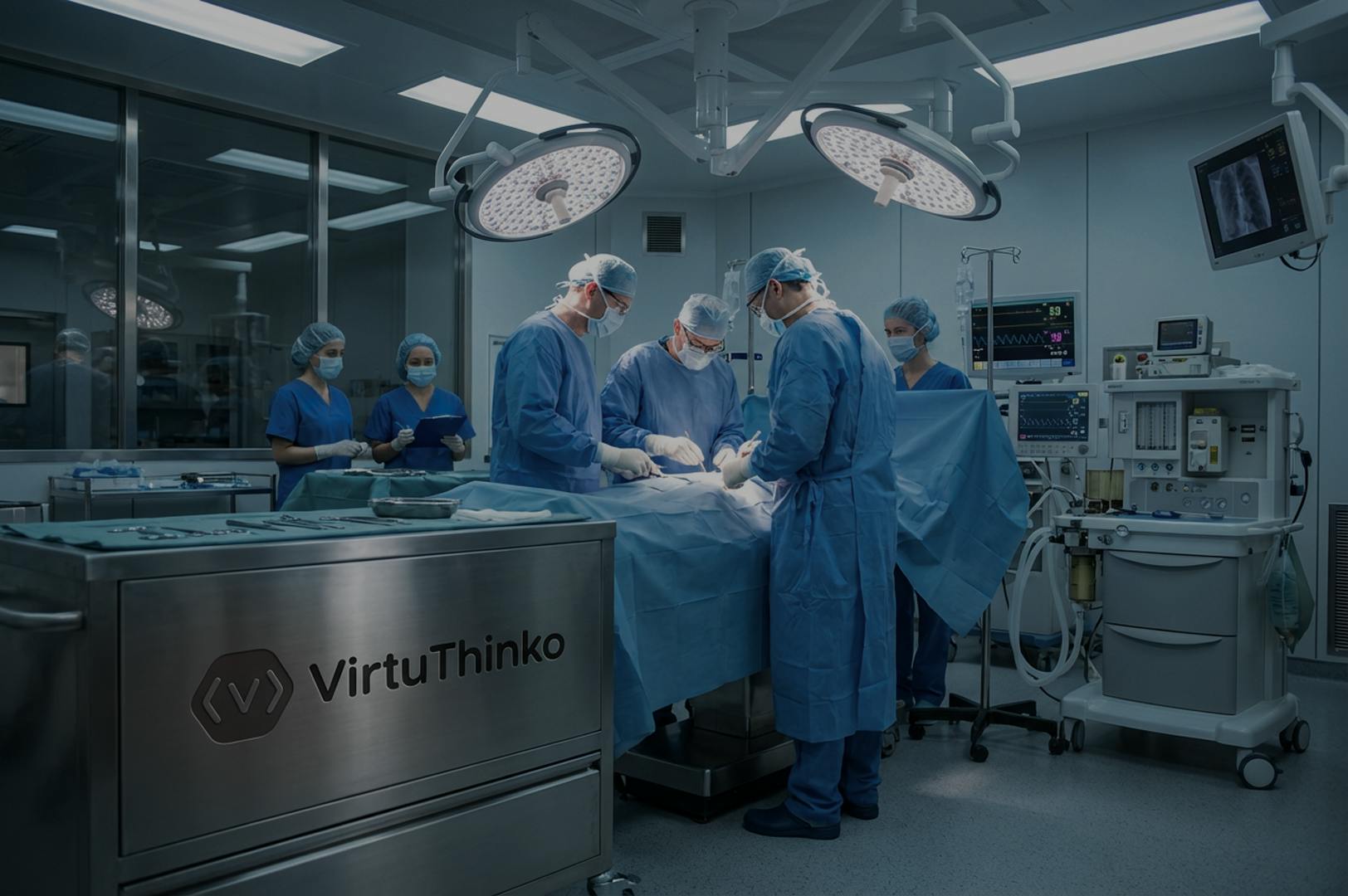
Securing Healthcare Providers
Cyberattacks Targeting Healthcare
Hospitals, clinics, and healthcare providers are increasingly targeted by cybercriminals because they manage life critical systems and large volumes of sensitive patient data. Attacks on electronic health records, connected medical devices, and hospital IT networks can delay diagnostics, cancel surgeries, and disrupt essential care. Recent global incidents have shown that ransomware and data theft can force facilities to revert to manual processes, pay significant ransoms, or suffer long service outages, directly affecting patient safety and trust.
State of Healthcare
$7.42 Million
Average cost of a healthcare data breach in 2025
73%
Healthcare breaches involve phishing and pretexting via email as the initial access vector
54%
Cyberattacks on the health sector are ransomware, with healthcare providers making up over half of reported incidents
How VirtuThinko Helps Healthcare
Clinical Systems & Medical Device Security
Protect hospital information systems, EHR platforms, PACS and connected medical devices by applying strong access controls, application allow listing and continuous monitoring, so only trusted software and users can interact with critical clinical systems.
Data Protection, Privacy & Compliance
Safeguard electronic health records and other sensitive patient information with encryption, policy based access, and detailed logging, while aligning with frameworks and regulations such as HIPAA, GDPR or local health data protection requirements to reduce legal and regulatory risk.
Cloud & Infrastructure for Digital Health
Design and secure cloud enabled environments for healthcare applications, including patient portals, telehealth platforms and back office systems, using resilient architectures, network segmentation and strong identity controls to keep services available and protected as digital health adoption grows.
Secure Portals, Integration & Testing
Support hospitals, clinics and laboratories with secure development, integration and assurance for portals and healthcare applications that connect booking, billing, lab, imaging and insurance systems, ensuring that changes are tested, vulnerabilities are identified early and third party connections do not introduce new risks.
Protecting Sensitive Data in Healthcare
Healthcare organizations must protect patient information and keep clinical services running without interruption. By combining strong security controls, resilient infrastructure and compliance aligned processes, providers can reduce the impact of cyber threats, maintain continuity of care and preserve the trust of patients, partners and regulators.
Leading Transformative Technology Solutions and Services Company
